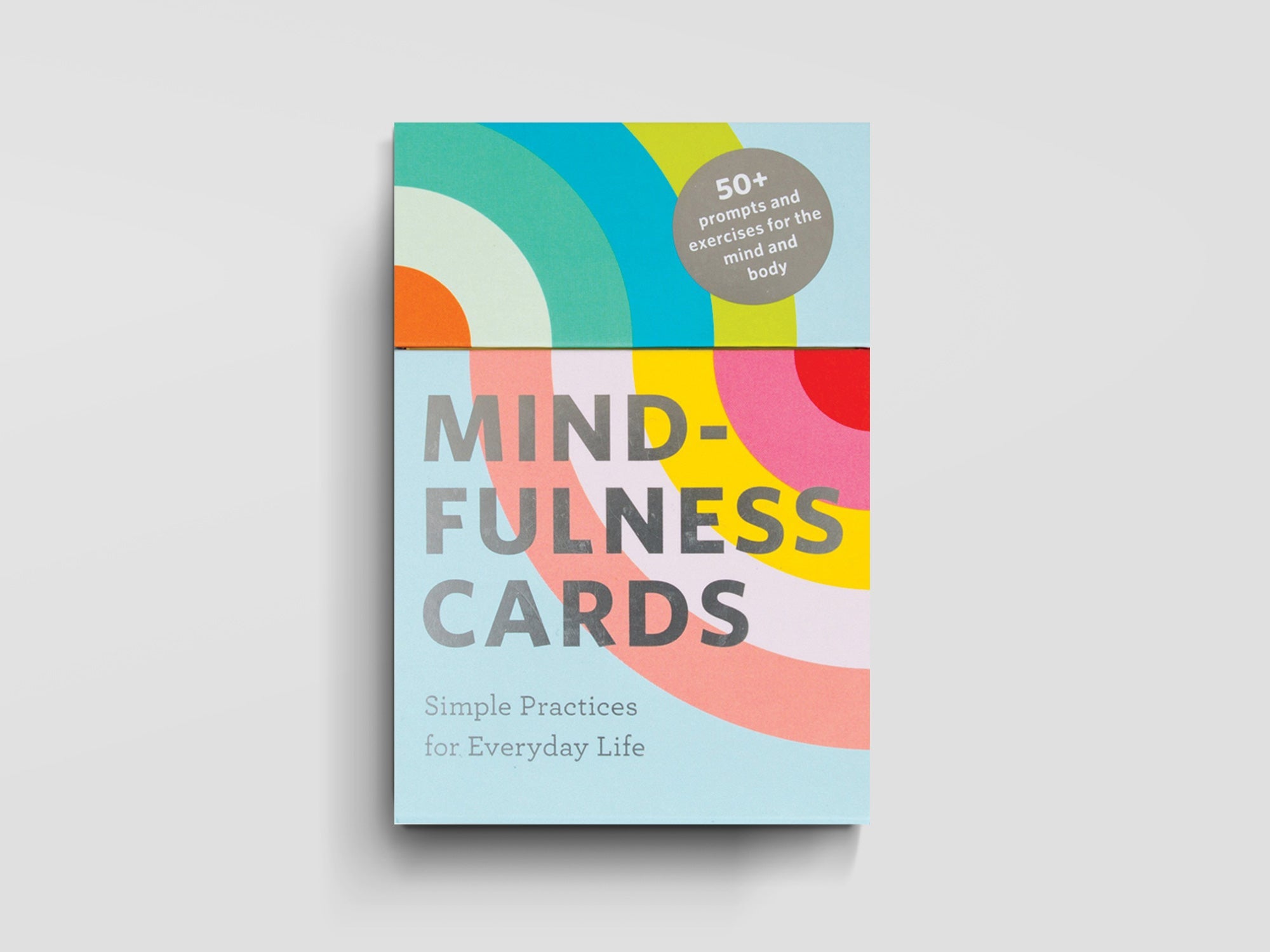
Mindfulness Techniques for a More Peaceful Mind
Written: Editor | October 3, 2023
:max\_bytes(150000):strip\_icc()/abdominal-breathing-2584115-final-14725983e6e144dea6d8c834d9d28b0c.gif)
Mindful Breathing Techniques
If you're looking for ways to cultivate a peaceful mind, incorporating mindful breathing techniques into your daily routine can be a game-changer. Taking just a few minutes each day to focus on your breath can help bring clarity, calmness, and reduce stress. Here are three simple techniques to get you started:
Deep belly breathing for relaxation
- Find a comfortable seated position or lie down, whichever feels best for you.
- Place one hand on your chest and the other on your belly.
- Take a deep breath in through your nose, feeling your belly rise as you fill your lungs with air.
- Slowly exhale through your mouth, allowing your belly to fall.
- Repeat this deep belly breathing for several minutes, focusing on the sensation of your breath.
Counting breaths to anchor the mind
- Close your eyes and take a moment to bring your attention to your breath.
- Inhale deeply through your nose, counting silently to yourself: one…
- Exhale slowly through your mouth, counting: two…
- Continue this pattern, counting up to a number that feels comfortable for you, then start again from one.
- If your mind wanders, gently bring your focus back to your breath and start counting again.
Noting thoughts and feelings without judgment
- Sit in a quiet place and take a few deep breaths to center yourself.
- As thoughts or feelings arise, simply notice them without judgment or attachment.
- Label the thoughts or feelings as “thinking” or “feeling” in your mind.
- Let them go and bring your focus back to your breath.
- Repeat this process as thoughts and feelings arise, cultivating a sense of non-judgmental awareness.
Remember, practicing these techniques regularly will help you develop a deeper sense of mindfulness and create a more peaceful state of mind.

Body Scan Meditation
Are you feeling overwhelmed and in need of some inner peace? One effective technique to help bring peace to your mind is the practice of body scan meditation.
Exploring sensations in the body
Start by finding a comfortable position and closing your eyes. Take a few deep breaths to relax your body and mind. Direct your attention to different areas of your body, starting from the top of your head and slowly moving down to your toes. Notice any sensations or tension in each body part as you shift your focus. Breathe into any areas of discomfort and allow the tension to release as you exhale. Continue this exploration for several minutes until you have scanned your entire body.
Bringing awareness to each body part
As you scan each body part, bring a sense of warmth and acceptance to the sensations you discover. Stay present and non-judgmental of whatever arises in each area. Allow your breath to flow naturally and guide your awareness throughout your body. Take your time with each body part and notice how your attention shifts as you explore different areas.
Take a moment to appreciate the sense of calm and relaxation that comes from this mindfulness practice.
By regularly incorporating body scan meditation into your routine, you can experience a peaceful mind and a greater sense of well-being.

Mindful Eating Practices
Bringing awareness to each bite
Have you ever found yourself mindlessly devouring your meal without even tasting it? It's easy to fall into this trap in our fast-paced lives. However, practicing mindful eating can help you reconnect with your food and bring a sense of peace to your mind.
To start, try taking a moment before you begin eating to acknowledge the food in front of you. Observe its colors, smells, and textures. Slowly take your first bite, paying attention to the flavors and how the food feels in your mouth. Chew slowly and thoroughly, savoring each mouthful.
Savoring the flavors and textures
As you eat, focus on the present moment. Notice how the food tastes and the subtle changes in flavors as you chew. Be curious and mindful of the textures, sensations, and temperature in your mouth. Allow yourself to fully experience the nourishment and pleasure that each bite brings.
By practicing mindful eating, you can reduce overeating as you become more attuned to your body's hunger and fullness cues. Additionally, it can improve digestion by allowing your body to properly process and absorb nutrients.
Remember, mindful eating is not about strict rules or restrictions. It's about cultivating a deeper connection with your food and bringing more awareness to your eating habits. So, the next time you sit down for a meal, take a moment to be present, savor each bite, and enjoy the nourishment it brings to your body and mind.

Mindful Walking
When it comes to finding inner peace and tranquility, sometimes the simplest activities can have the most profound impact. One of these activities is mindful walking.
Paying attention to each step and movement
To practice mindful walking, start by finding a quiet and peaceful environment. As you begin to walk, bring your attention to each step and movement. Notice how your feet touch the ground, the sensation of each stride, and the cadence of your walk. Be fully present in the experience of walking, letting go of any distractions or thoughts that may arise.
Feeling the connection with nature
As you continue to walk mindfully, take the opportunity to connect with nature. Notice the beauty of the surrounding environment – the colors, sounds, and smells. Feel the breeze on your skin, listen to the birds singing, and observe the leaves rustling in the wind. Allow yourself to be fully immersed in the present moment, experiencing a sense of oneness with nature.
By engaging in mindful walking, you can cultivate a peaceful mind and nourish your overall well-being. Regular practice can help reduce stress, improve focus, and bring about a greater sense of calm and clarity in your life.
Remember, mindfulness is a journey, and each step you take towards greater presence and awareness can have a positive impact on your overall well-being. So take a moment to pause, step outside, and embark on a mindful walking practice to bring peace and tranquility to your mind.

Loving-Kindness Meditation
If you find yourself searching for inner peace and tranquility, then loving-kindness meditation might be just the technique for you. This technique is designed to cultivate feelings of compassion and empathy towards oneself and others.
Extending compassion and love to oneself
To practice loving-kindness meditation, find a quiet and comfortable space where you can sit or lie down. Close your eyes and take a few deep breaths to relax your body and mind. Then, begin by directing loving and kind thoughts towards yourself. Repeat positive affirmations such as “May I be happy, may I be healthy, may I be free from suffering” in your mind. Allow these thoughts to fill your heart and radiate throughout your body.
Sending positive wishes to others
After extending love and compassion to yourself, you can move on to sending positive wishes to others. Visualize the person you want to send loving-kindness to, and repeat phrases such as “May you be happy, may you be healthy, may you be free from suffering” in your mind. You can start with someone close to you and gradually expand to include more people, including loved ones, friends, acquaintances, and even difficult individuals.
Practicing loving-kindness meditation regularly can help foster a peaceful mind by promoting self-acceptance, empathy, and a deep sense of interconnectedness with others. So why not give it a try and experience the transformative power of love and compassion in your life?

Mindful Technology Usage
Becoming aware of our digital habits
In today's fast-paced world, it's easy to get caught up in the constant stream of notifications and distractions from our devices. However, practicing mindfulness can help us regain control over our digital habits and promote a peaceful mind.
Start by becoming aware of how much time you spend on your phone or computer each day. Notice any patterns or triggers that lead to excessive use. Are you mindlessly scrolling through social media when you're stressed or bored? Recognizing these habits is the first step towards making positive changes.
Setting boundaries for technology use
Setting boundaries is another essential aspect of mindful technology usage. Here are some techniques you can try:
-
Designate tech-free zones or times: Create designated areas in your home or specific times of the day where technology is off-limits. This will give you a break from screens and allow you to focus on other activities.
-
Practice digital detox: Take regular breaks from technology, such as going for a walk without your phone or having a device-free day once a week. This will give your mind a chance to recharge and reset.
-
Use technology intentionally: Instead of mindlessly scrolling, be intentional about your technology use. Set specific goals or tasks for each session and avoid getting sidetracked by irrelevant content.
By incorporating these mindful technology usage techniques into your daily life, you can create a healthier relationship with your devices and cultivate a peaceful mind. Remember, it's about finding a balance that works for you and prioritizing your well-being. So, take a moment to put your phone down, take a deep breath, and embrace the present moment.

Mindful Journaling
Reflecting on thoughts and emotions
Are you feeling overwhelmed by the constant stream of thoughts and emotions? Mindful journaling can be a powerful tool to help you gain clarity and bring peace to your mind. Take a few minutes each day to reflect on your thoughts and emotions by writing them down in a journal. This practice allows you to observe your inner experiences without judgment, and it can be incredibly freeing.
To begin, find a quiet and comfortable space where you can focus your attention. Start by taking a few deep breaths and bring your awareness to the present moment. Simply write down whatever comes to mind, without censoring or editing your thoughts. Allow yourself to express your feelings openly and honestly. As you write, notice any patterns or recurring themes in your thoughts and emotions. This self-reflection can provide valuable insights into your inner world.
Expressing gratitude and positive affirmations
Are you seeking more positivity and gratitude in your life? Mindful journaling can also be used as a tool for expressing gratitude and cultivating a positive mindset. Take a few moments each day to write down things you are grateful for and positive affirmations about yourself and your life. This practice can shift your focus from negative to positive and create a sense of joy and contentment.
When expressing gratitude, be specific and detailed. Write about the small moments, actions, or people that brought you joy and appreciation. Similarly, when creating positive affirmations, choose statements that resonate with you and reflect your true potential. Write these affirmations as if they are already true and repeat them to yourself regularly.
Incorporating mindful journaling into your daily routine can bring a sense of peace and clarity to your mind. Give it a try and see how it can enhance your well-being and cultivate a peaceful state of mind.

Creating a Mindful Environment
Are you looking for ways to create a peaceful and tranquil mind? By cultivating a mindful environment, you can enhance your well-being and bring more peace into your life.
Decluttering physical spaces for calmness
-
Tidy up your space: Start by decluttering your physical surroundings. A clean and organized environment promotes a calm and focused mind. Remove any unnecessary items and keep only what brings you joy or serves a purpose.
-
Minimize distractions: Reduce visual clutter and distractions in your workspace and living areas. Clear off your desk, organize your digital files, and create a peaceful environment that supports your mental clarity and productivity.
Designing a peaceful sanctuary at home
-
Create a designated relaxation area: Set aside a space in your home where you can unwind and engage in mindful activities. It can be a corner with comfortable seating, soft lighting, and calming decor. Use this area for meditation, reading, or simply enjoying moments of stillness.
-
Introduce soothing elements: Incorporate elements that promote tranquility, such as plants, essential oils, and calming colors. These natural elements can help create a peaceful atmosphere and induce a sense of serenity.
Remember, creating a mindful environment is a process, and it requires ongoing effort to maintain. Make it a habit to regularly declutter and design spaces that support your inner peace. By taking these steps, you can cultivate a peaceful mind and enhance your overall well-being.

Conclusion
Incorporating mindfulness techniques into your daily life can be a powerful tool for cultivating a peaceful and balanced mind. By practicing mindfulness, you can learn to be fully present in each moment, reduce stress and anxiety, and improve your overall well-being.
Practical tips for incorporating mindfulness into daily life
-
Start small: Begin by dedicating just a few minutes each day to mindfulness practice. Gradually increase the duration as you become more comfortable.
-
Choose a mindfulness technique: There are many techniques to choose from, such as focused breathing, body scans, or mindful walking. Experiment with different techniques to find what works best for you.
-
Set reminders: Use reminders throughout the day to bring yourself back to the present moment. It could be a timer on your phone, a sticky note on your desk, or a mindfulness app.
-
Practice mindfulness in everyday activities: Incorporate mindfulness into your daily routines. Whether it's mindful eating, mindful listening, or mindful cleaning, bring your full attention to each task.
Embracing a peaceful and balanced mind
Be kind to yourself: Practice self-compassion and be gentle with yourself when your mind wanders during mindfulness practice. It's normal for thoughts to arise, but simply observe them without judgment and gently bring your focus back.
Make it a habit: Consistency is key when it comes to mindfulness. Try to make it a daily practice, even if it's just for a few minutes. Over time, you'll start to notice the positive effects on your overall well-being.
Remember, mindfulness is a journey, not a destination. By incorporating these mindfulness techniques into your daily life, you can cultivate a peaceful and balanced mind.



